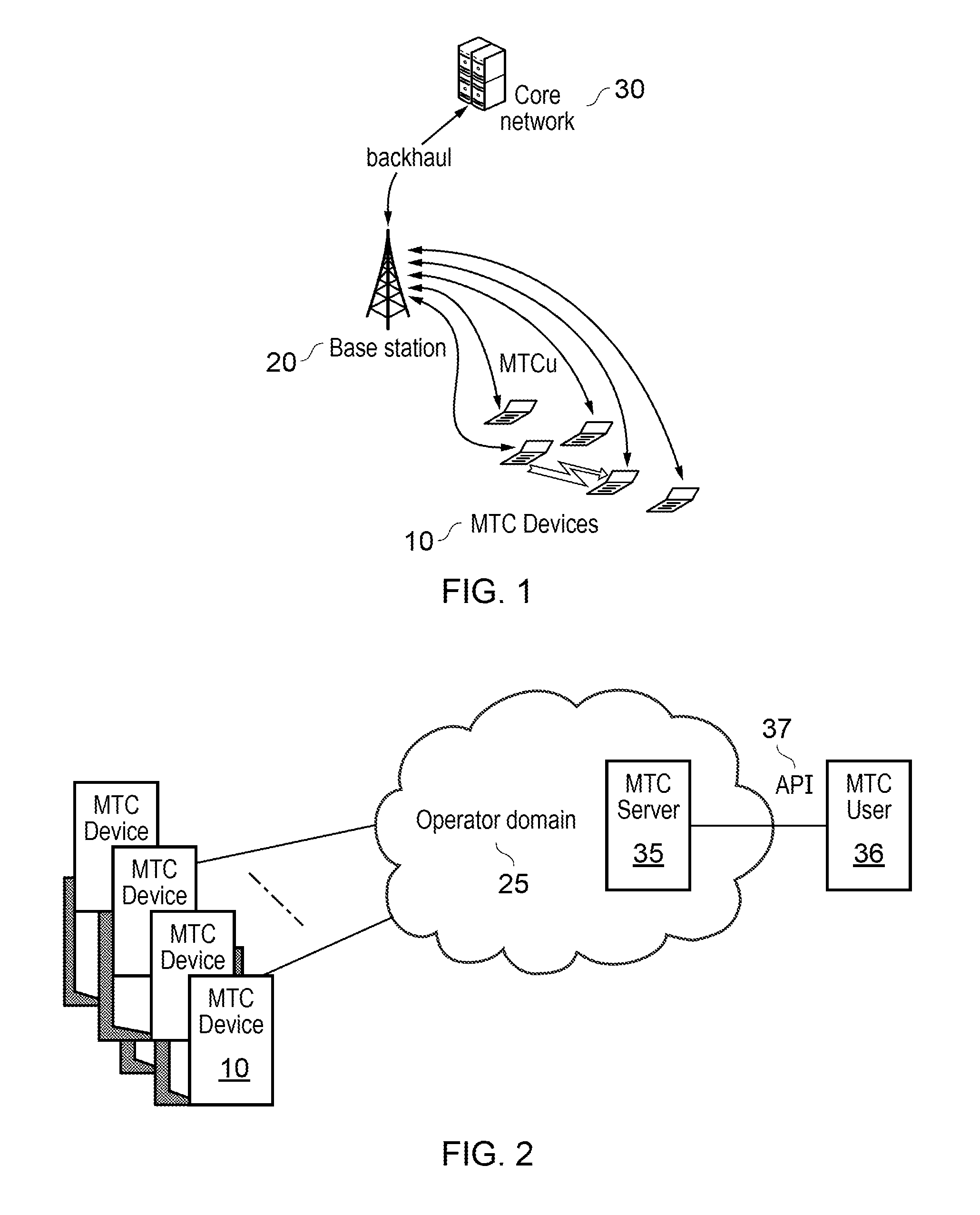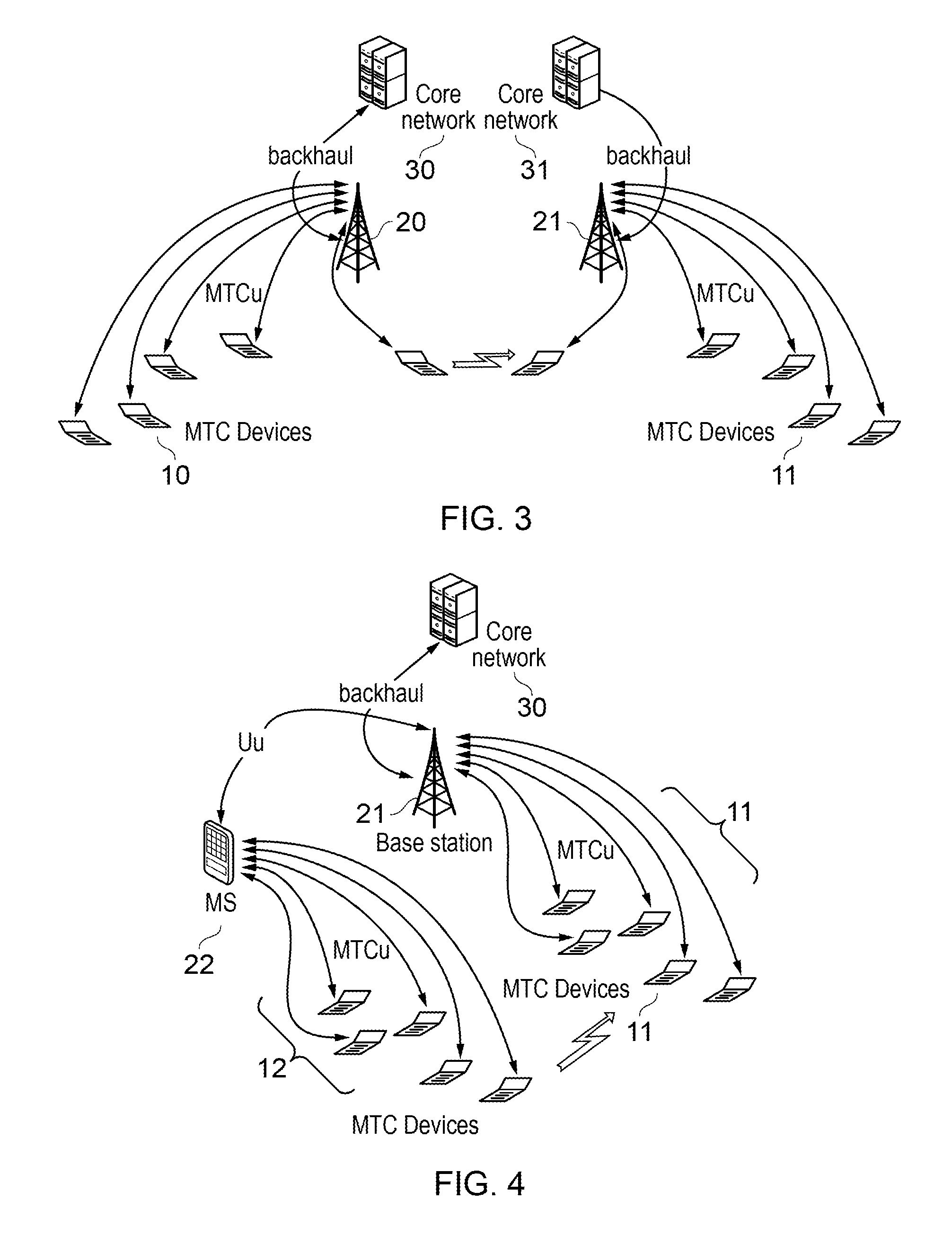Interference management in wireless communication networks
a wireless communication network and interference management technology, applied in transmission monitoring, machine-to-machine/machine-type communication services, orthogonal multiplexes, etc., can solve problems such as the increase of radio interference between devices, and achieve the effect of reducing interference in the system
- Summary
- Abstract
- Description
- Claims
- Application Information
AI Technical Summary
Benefits of technology
Problems solved by technology
Method used
Image
Examples
Embodiment Construction
[0061]Before describing embodiments of the present invention, some further explanation will be given of interference scenarios and measures already under consideration for mitigation of interference.
[0062]In the following description, the term base station is used to denote the interface point between the radio interface used to connect a wireless device (e.g., MTC device) and the core network. This may or may not be a cellular base station as for example found in cellular standards such as GSM / UMTS / LTE.
[0063]FIG. 1 schematically shows interference between a plurality of MTC devices 10 operating from the same base station 20 using the same or different frequency bands. The base station 20 communicates with a core network 30 via a backhaul (usually a wired connection).
[0064]In FIG. 1, MTCu denotes the radio interface that is used to send and receive information from the MTC devices 10. The interface labelled MTCu in the Figure represents any radio communication method that can be use...
PUM
 Login to View More
Login to View More Abstract
Description
Claims
Application Information
 Login to View More
Login to View More - R&D
- Intellectual Property
- Life Sciences
- Materials
- Tech Scout
- Unparalleled Data Quality
- Higher Quality Content
- 60% Fewer Hallucinations
Browse by: Latest US Patents, China's latest patents, Technical Efficacy Thesaurus, Application Domain, Technology Topic, Popular Technical Reports.
© 2025 PatSnap. All rights reserved.Legal|Privacy policy|Modern Slavery Act Transparency Statement|Sitemap|About US| Contact US: help@patsnap.com



